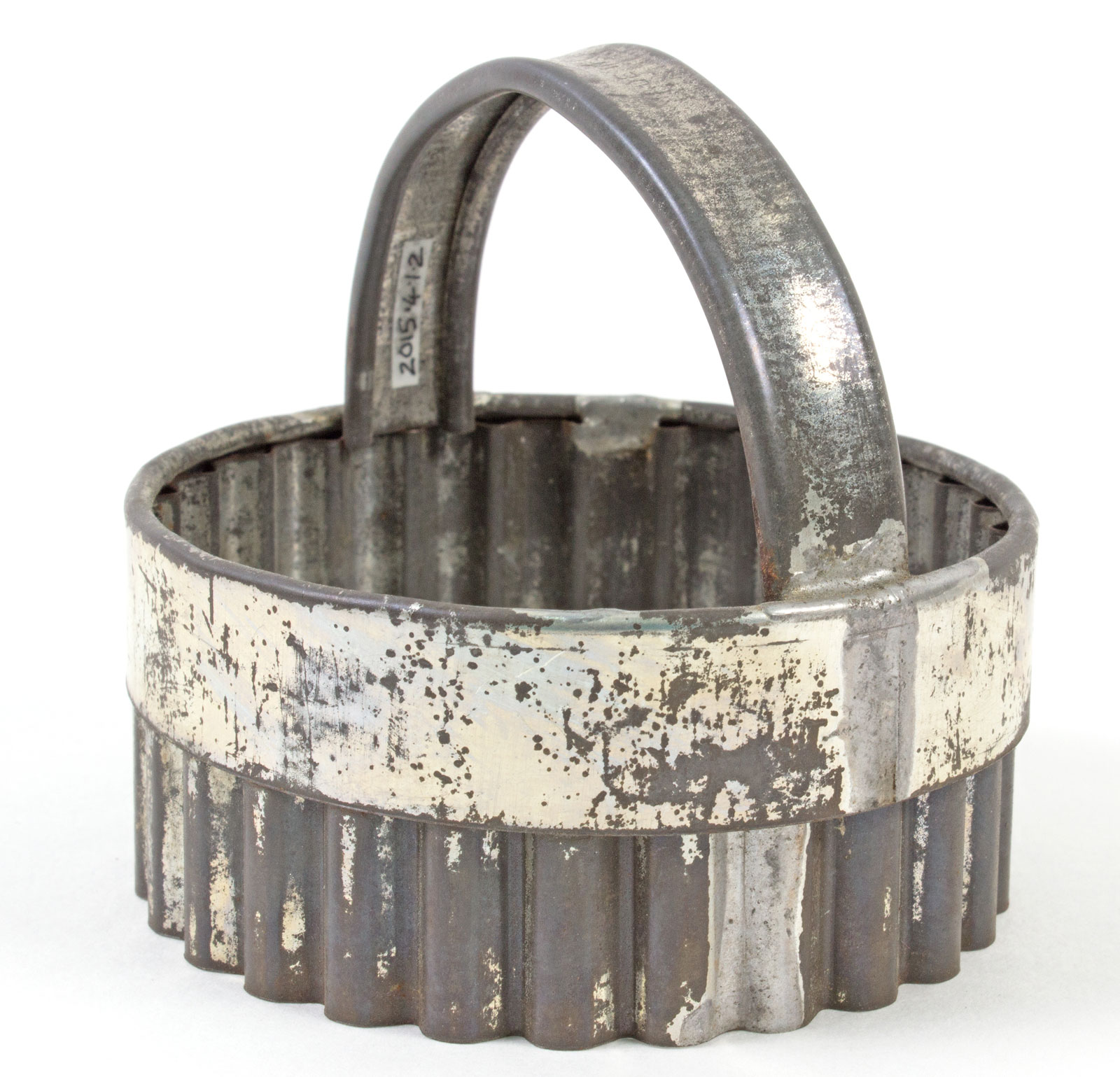
Biscuit cutter. Collection of Auckland Museum Tamaki Paenga Hira wikimedia 2015 Auckland Museum CCBY
Biscuit cutters are used to cut dough for the North American definition of biscuits (similar to English scones but without the higher amounts of sugar.)
They are round, with a taller cutting edge than a cookie cutter. They can be made of plastic, nylon, stainless steel, tin, etc. The edges can be straight or fluted, though the fluted edges don’t always come through after baking.
You can get them in different sizes to make different widths of biscuits.
To prevent sticking, dip your biscuit cutter in flour before each cut. Press straight down into the dough. If you have a good cutter with a sharp edge, you shouldn’t have to twist. Twisting can pinch the dough, preventing the layers from separating and causing the biscuits to not get as good a rise in the oven as they might otherwise. A good cut should reveal the biscuit edges to have layers through them.
Cut out your biscuit shapes from the dough as closely together as you can.
Wash biscuit cutters with hot water and soap. Let dry completely before putting away to prevent rusting.
Substitutes
To make small biscuits, you can use an empty small tomato paste tin, washed and dried, with both ends cut out. For larger ones, you can use a soup tin similarly prepared, or use a drinking glass. Alternatively, you can just cut squares or triangles out of the dough with a very sharp knife.

Biscuit cutter. Collection of Auckland Museum Tamaki Paenga Hira wikimedia 2015 Auckland Museum CCBY

